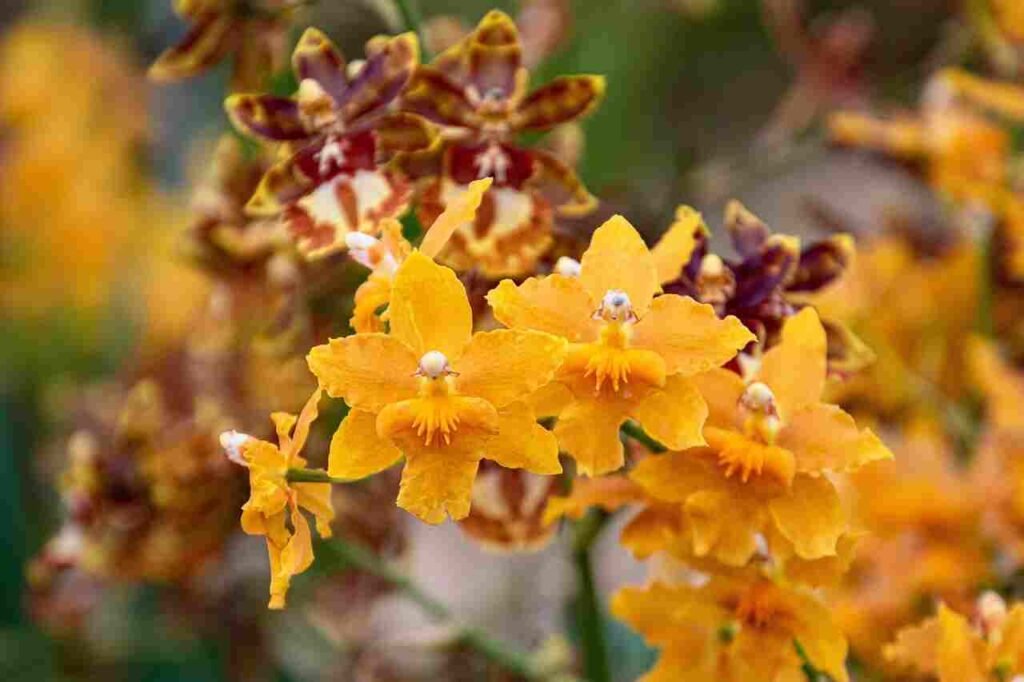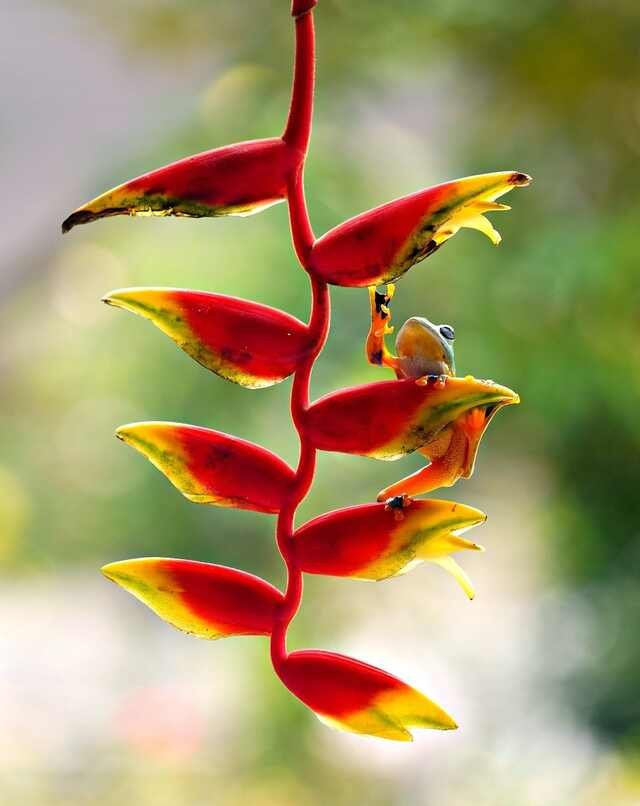Orchids give a few examples, so the most popular low-light orchid is the Phalaenopsis orchid. The one you find in the store or garden center is pretty much a staple.
Low Light Requirements

Orchids give a few examples, so the most popular low-light orchid is the Phalaenopsis orchid. The one you find in the store or garden center is pretty much a staple. Phalaenopsis orchids do not demand bright, bright light, but they will not perform well in full darkness either. So, the fact that Phalaenopsis is a low light plant doesn’t mean that we can put it on a shelf very far away from the window or under a desk, and it will do just fine. No, actually, it’s not going to thrive at all. What it actually means is that low light orchids can do very well if they never see direct sunshine. Phalaenopsis orchids do great in bright shade, and I think that is a better term to describe it because shade means lack of direct sunlight, but it doesn’t mean darkness. The way I grow my Phalaenopsis orchids is on a shelf that never receives direct sunlight, not even filtered, but it does receive light coming from my south window and also from my west window in front of my greenhouse. There is a white building which reflects light, so in my greenhouse, there is quite a lot of bright light which Phalaenopsis orchids really enjoy. But they don’t require the sun hitting their leaves. Phalaenopsis orchids will definitely do great near a bright window but definitely in a place that doesn’t receive direct sunshine. Some of my Phalaenopsis did receive direct sunshine but quite late in the afternoon when the sun was setting, and that is perfectly fine for them. What they cannot tolerate is direct, hot sunshine on their leaves. Phalaenopsis orchids are pretty prone to getting sunburned. By offering light bouncing from the walls or coming from a bright window, we are still giving light so they can photosynthesize, but we are avoiding the possibility of leaf burn. Phalaenopsis orchids are also very good candidates for artificial light. In this case, burning up the leaves can only occur if the leaf actually touches a hot bulb. LED fixtures don’t get all that hot, but it’s still a good idea not to let the leaves touch the fixture. Other than that, it is pretty impossible to sunburn Phalaenopsis orchids or any type of orchid if we keep it under artificial light at a sufficient distance from the actual bulb. Generally, low-light orchids, which do not require direct sunshine on their leaves, thrive under artificial light and in bright shade conditions, such as Phalaenopsis, or in the same light conditions, Miltoniopsis orchids. Nelly Isler and the famous Nelly Isler, which again we can find easily in stores or garden centers, are low light plants as well. So, they can grow and perform beautifully even if direct sunshine does not touch their leaves. They can degrade in bright shade and also under artificial lights. If they do receive direct sunlight early in the morning or late in the afternoon, there’s really no problem because the main thing we’re trying to avoid is leaf burn. And low-light orchids generally are more sensitive to obtaining burns on their leaves because of the sun, rather than medium-light orchids or high-light orchids.
Medium Light Requirements
Now, medium light orchids are somewhat in between low-light orchids and high-light orchids. They will not necessarily perform to their full potential in the same light conditions as Phalaenopsis and Paphiopedilum. Direct sunshine in the morning and late afternoon is actually very beneficial, and in some cases can make the difference between an orchid which doesn’t want to bloom and one that blooms nicely. However, when it comes to the timeframe in which they need direct sunshine, they really don’t need a certain amount of hours of direct sunshine. With medium light plants, we can do very well in bright shade conditions, but this light shade needs to be a little brighter than in the case of Phalaenopsis. So positioning a medium light orchid closer to the window will actually provide a brighter light intensity without actually providing direct sunshine. But with these orchids, if we can provide direct sunshine at a time of the day when the sun is not very hot, is actually extremely beneficial. The most famous medium light Oncidium orchids are Oncidium Twinkle, some Oncidium NoID hybrids, even Brassia orchids. Medium light orchids can do very well under artificial light as well, but we can adjust the intensity simply by placing the light closer to the orchid itself. In the case of Phalaenopsis orchids, we can do very well with a light source which comes from the ceiling. But in the case of Oncidium and medium light plants, the artificial light source needs to be quite close to the orchid. My light source is actually attached to the shelf they have above them, so the distance between them and the artificial light is about 20 or 25 centimeters. You can even go a little closer than that as long as the leaves don’t touch the actual bulb, everything should be okay. Furthermore, if medium light orchids do receive direct sunshine, but again, it is later in the afternoon. Even if they do require more light than low-light orchids, they are still prone to getting some burns because they are not adapted to a lot of sunlight. With medium light orchids, there are also exceptions. Even with Oncidium, there are those types which do require brighter lights. And of course, there are those hybrids or other species which can do very well in low to intermediate light conditions. But generally, for medium light orchids, direct sunshine in the morning time or in the evening is very beneficial. They do still require sheltering from hot sun, but they’re not as prone to sunburn as Phalaenopsis or other low light plants.
High Light Requirements
Finally, high light orchids. These are the orchids which demand the highest amount of light. But as I was saying in the beginning, it’s never good to offer extremes, especially if an orchid is not gradually adjusted to the quantity of light. The high light orchids can tolerate direct sunshine, depending on the species, but yet again, this category is quite diverse. Some orchids will tolerate more sunshine or hotter sunshine, while others will only tolerate filtered sun. The high light orchids are definitely the Vanda orchids, which are famous for their light demands, and under certain conditions, they can definitely tolerate direct sunshine. Other high light orchids include Cattleya orchids, but the difference is they don’t require as much direct sunshine as Vanda orchids. Also, many Cattleyas are not adapted to extended hotter sunshine, so in this case, just to play it safe, it’s always a good idea to provide filtered sunshine. I have my high light orchids really close to the window, and this is a southern window, but I do have a sheer curtain which protects them from overheating. But to wrap it up with high light orchids, they will definitely not perform their best in low or even medium light conditions. Some of them might not bloom at all; they might just grow foliage, while others might grow very, very slowly. So these orchids are suited for those locations which benefit from a position that receives direct sunshine. From there, we can choose to filter that direct sunshine with a sheer curtain or even a shading cloth, but definitely never block the entire quantity of sun. The main problem with the quantity of light is sunburn, and sunburn usually occurs when leaves of orchids overheat. Certain species of orchids cannot tolerate the same heat as other species. Usually, the high light orchids are not as prone to sunburns because they can tolerate their leaves heating up, at least to a certain extent, while, let’s say, low light orchids cannot tolerate the same amount of heat as a high light orchid. One important thing to keep in mind, even with high light orchids, is that if they are grown in an environment which receives quite a clear distinction between summertime and wintertime when it comes to quantities of light, after the winter, they will not be prepared to handle direct sunshine as well, let’s say, as in the summertime. They need to be gradually adjusted to the spring sun, and this is because they need some time to develop and release a certain chemical that protects their leaves from being burnt. The higher the amount of direct sunlight, the more the leaves will heat up, so we need to consider the elements in our growing environment, such as humidity, ventilation, and temperature, so we know if our orchid, even if it’s a high light orchid, is prone to getting sunburned. Light is an element all plants need to perform photosynthesis and have energy to grow, so depriving orchids of light, even low light orchids, is never a good idea.
Conclusion
That’s about it on the light quantity. I tried to keep this as simple as possible, but I will finish by saying that there are certain instruments that measure the quantity of light you have in a certain location.



